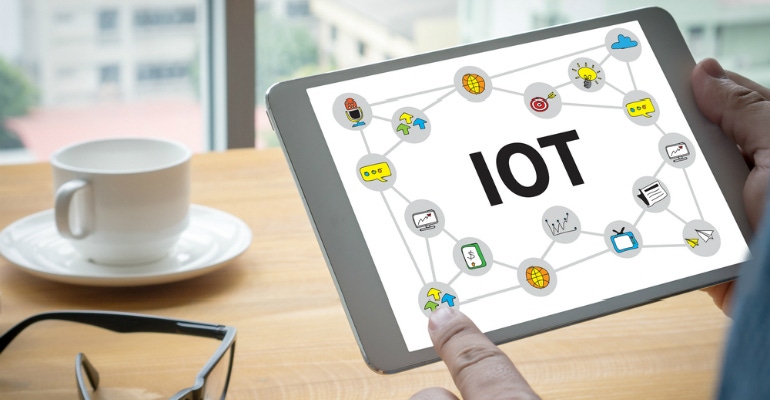10 Smart Ways IoT Gets Real for Customers10 Smart Ways IoT Gets Real for Customers
Partners have a big role advising customers on when the value of IoT implementation outweighs risk.
November 6, 2018

Already have an account?
**Editor’s Note: Throughout the fourth quarter of 2018, as part of our “In Focus” series, we will feature a series of galleries designed to help partners grow their businesses in 2019 and beyond.**
Back in 2014, the internet of things (IoT) was at the peak of inflated expectations in Gartner’s hype cycle for emerging technologies. Today, it’s the No. 1 emerging technology poised to have the greatest potential to make near-term impacts on businesses, as ranked by CompTIA’s Emerging Technology Community.
IDC’s Worldwide Semiannual Internet of Things Spending Guide forecasts IoT spending to reach $1.2 trillion in 2022, a compound annual growth rate (CAGR) of nearly 14 percent from 2017-2022.
“The IoT market is at a turning point — projects are moving from proof of concept into commercial deployments,” said Carrie MacGillivray, group vice president, Internet of Things and mobility at IDC. “Organizations are looking to extend their investment as they scale their projects, driving spending for the hardware, software, services and connectivity required to enable IoT solutions.”
If you’re not entirely familiar with the ins and outs of IoT, for starters, it is building blocks. IoT is the internetworking of physical devices, vehicles, buildings, and other items embedded with electronics, software, sensors, actuators, and network connectivity which enable these objects to collect and exchange data.
IoT has a lot of moving parts, not to mention data management and security.
What IoT is not, is a business outcome or use case — that takes innovation. IoT innovation is plentiful and is growing by leaps and bounds. IoT deployments span across industry sectors — cities and communities, manufacturing, energy, transportation, retail, education, health care, oil and gas, and agriculture.
According to IDC, the consumer sector leads IoT spending growth, followed by insurance and health-care provider industries.
Bain expects the combined markets for IoT, including hardware, software, systems integration, and data and telecom services, to reach $520 billion by 2021, more than double the $235 billion spent last year. Most of that will be captured by the enterprise and industrial segment. Every channel partner should get up to speed on IoT and the business opportunity it presents.
Even though IoT is headed toward the mainstream, it’s not without its challenges. There are still standards to be formalized — just take a look at the dizzying list in Gartner’s 2017 Hype Cycle for IoT Standards and Protocols; there are more IoT platforms than anyone knows what to do with; security risks abound at multiple levels; integration, interoperability and testing is still an issue; and what about all that data?
None of these challenges will stop IoT in its tracks; they will, however, give business decision-makers pause for thought. Channel partners have a big role to play in educating and advising their customers on IoT use cases and when the value of implementation outweighs the risks.
“IoT projects have too many moving parts and may require shifts in organizational culture and mindset and, of course, there are technical challenges as well,” said Joyce Mullen, president, global channel, OEM and IoT at Dell EMC. “Customers need a deliberate and manageable project to start with in order to succeed.”
Her advice is to start small and evolve in the interim, celebrate the incremental milestones and use those as a foundation to impact bigger change in the future. And, partners can improve their chances of success by choosing a use case with a solid ROI.
Take a stroll through our slide show for 10 smart ways IoT gets real for customers.
About the Author
You May Also Like


